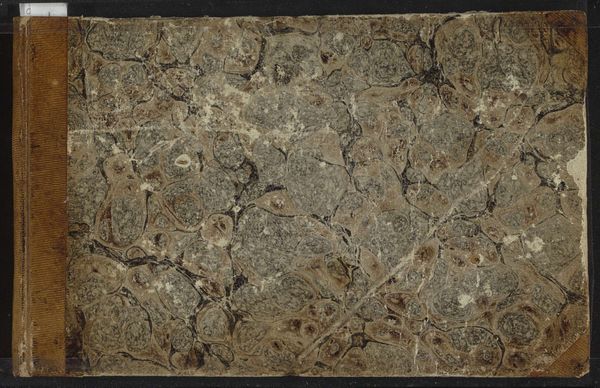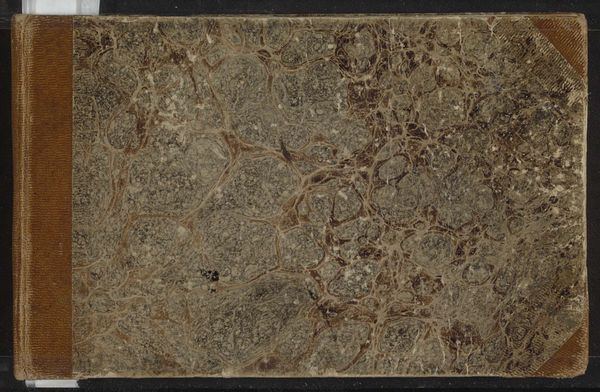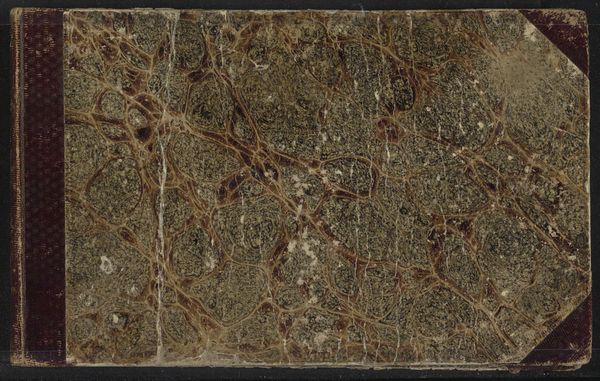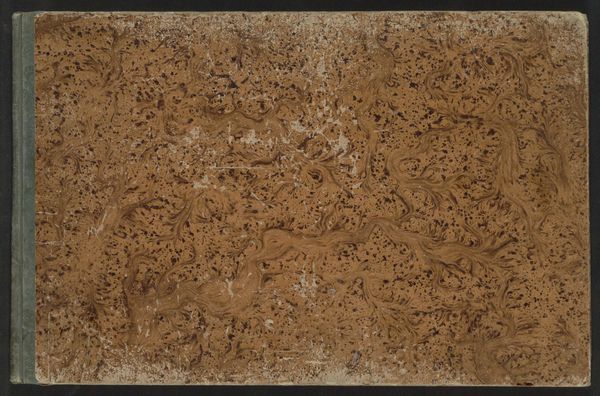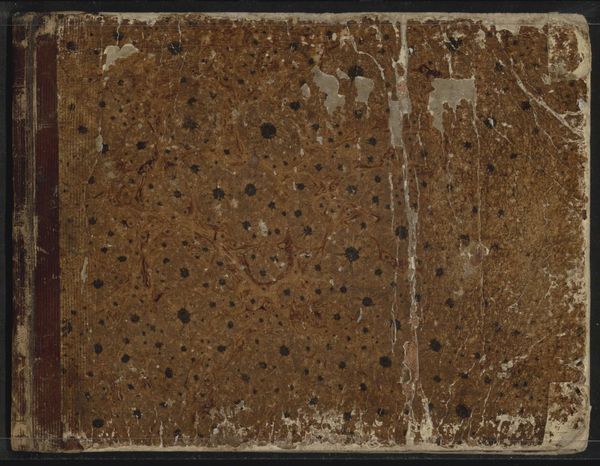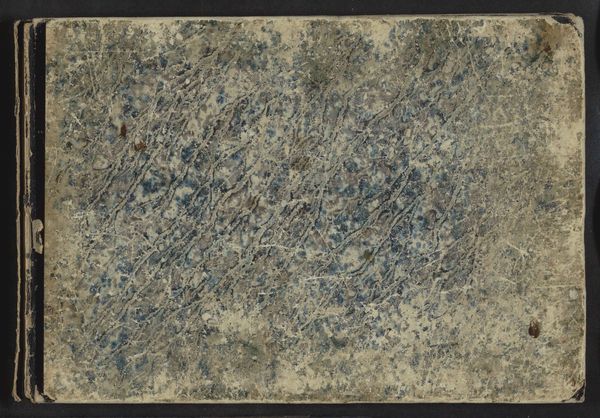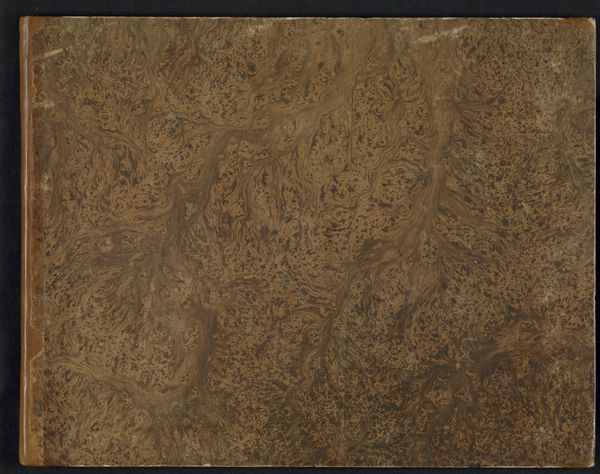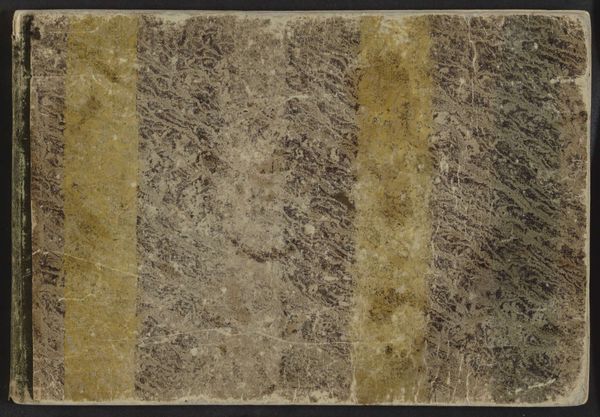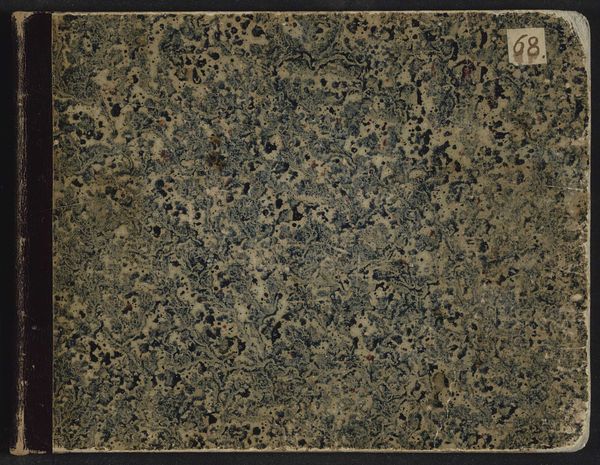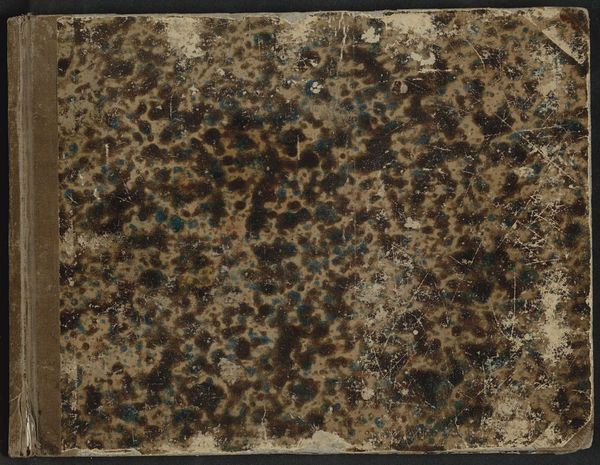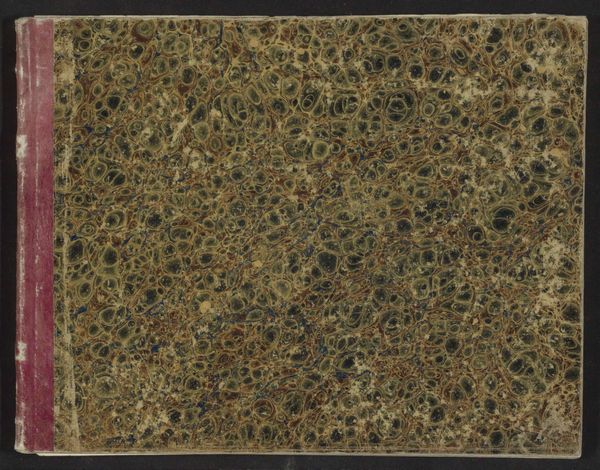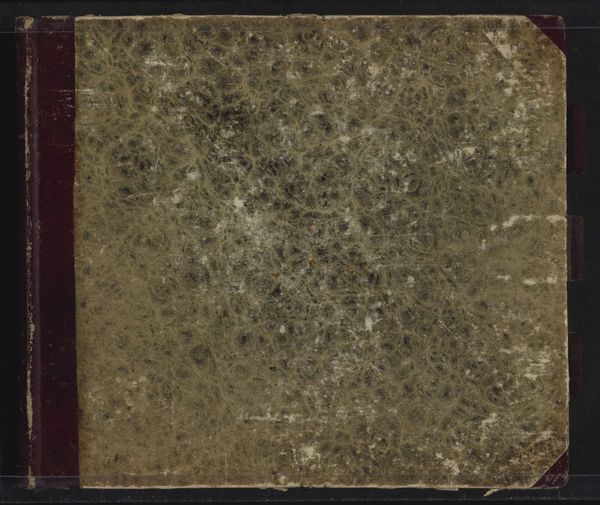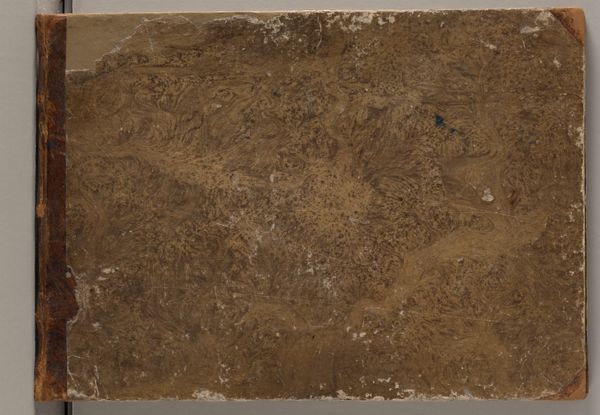
collage, wood
#
collage
#
abstraction
#
wood
Dimensions: height 137 mm, width 219 mm, thickness 11 mm, width 439 mm
Copyright: Rijks Museum: Open Domain
Curator: Here we have the cover of Johannes Tavenraat’s “Sketchbook with 41 Leaves,” created circa 1840 to 1841. It’s currently housed here at the Rijksmuseum. Editor: Woah. That’s giving me major subconscious vibes. Is it supposed to be marbling? It feels almost like a geological map of a very disturbed planet. Or like the skin of some kind of massive… I don’t know… ancient, wise, grumpy being? Curator: I find it interesting that you say that. Given its use as a sketchbook, and considering the period it was created in, it does appear like Tavenraat's choice of book cover intends to speak to deep time—to the history held in our very planet. You see, marbling on book covers during this time often served to connect the inner contents to the broader, universal themes of nature and creation. Editor: Ah, okay, like a promise of what’s inside. So the outside mirrors the creative chaos held within the sketchbook itself? Makes me wonder what was going on in Tavenraat’s head at the time. This aesthetic feels more psychological, something you might find covering Freud's notebooks or even Carl Jung's "Red Book." Curator: The association to psychology makes perfect sense. Even this "grumpy being," that you’ve intuited, it also reflects the influence of Romanticism at the time. We find similar imagery symbolizing inner turmoil. I see the appeal to Jung, however. Given the personal exploration that happens in a sketchbook like this, you wonder if the design may tap into something more abstract from within. Editor: Right. And the dark, looping lines create a sense of containment, but the mottled colors make it feel porous, somehow. The tension between revealing and concealing... I could just stare at it forever. What about that spine on the left there, the dark vertical bar—does that also convey a message? Curator: I'd argue it provides both literal and symbolic structural support. Realistically, it holds the pages together, and visually it presents stability to a rather fluid pattern. If the pattern alludes to abstraction—then the spine’s presence communicates something about the formal containment of thought. A subtle dialogue that mirrors a sketchbook’s contents exactly. Editor: Totally. I think I might have to sit with grumpy old sketchbook for a while and let its geological secrets sink in. It's the kind of artwork that quietly unravels as you observe.
Comments
No comments
Be the first to comment and join the conversation on the ultimate creative platform.
